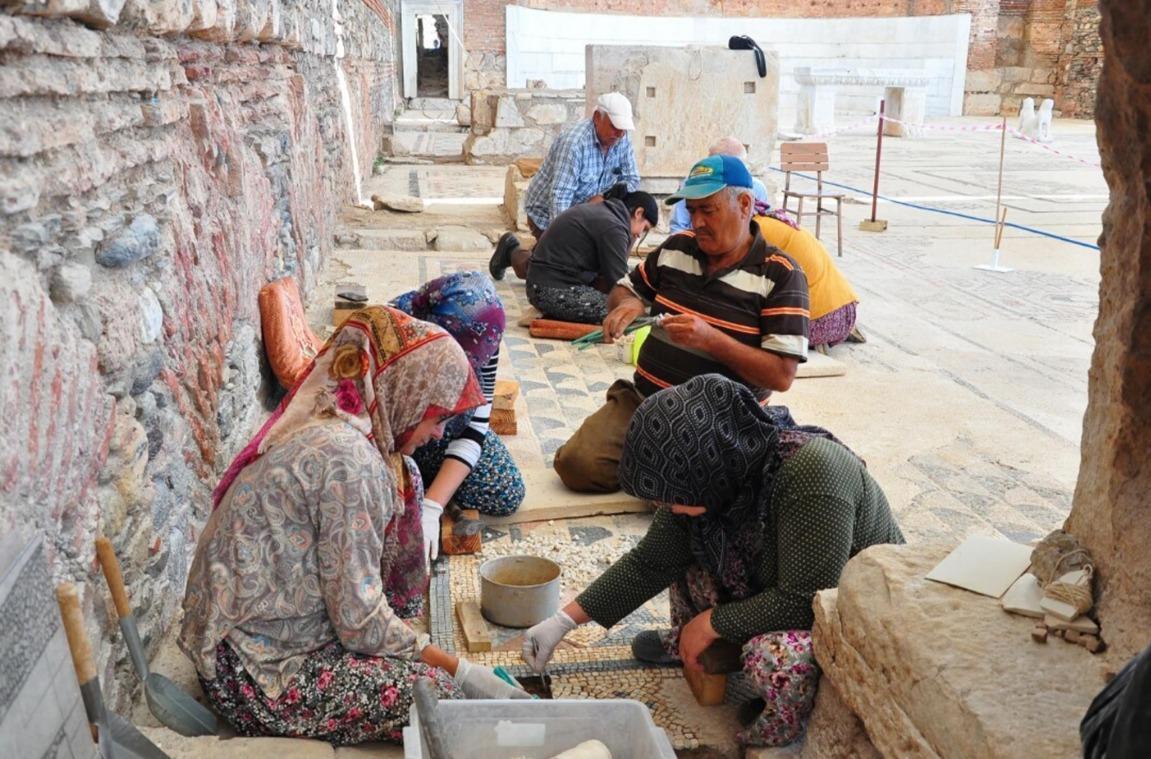Women renovate largest synagogue of ancient world
MANİSA

Village women take part in the renovation works of the largest synagogue of the ancient world, located in the ancient city of Sardis, the capital of the Lydian Kingdom, known as the place where money was first printed.
The ancient city of Sardis has been on the UNESCO World Heritage Tentative List since 2013.
An important venue in terms of faith tourism, the synagogue is currently open to tourists and its mosaic stones on the floor were laid by women in accordance with the original.
Archaeological excavations started 159 years ago in the ancient city of Sardis and still continue. The ancient city, located in the Sart district of the Salihli district in the western province of Manisa, was the capital of the Lydian Kingdom, which is known as the place where money was first printed under the guarantee of the state.
Many structures and artifacts from Lydian, Persian, Hellenistic, Roman, Byzantine and other cultures have been unearthed during the excavations in the ancient city, which was the home of various settlements and many civilizations for over 5,000 years. It is also home to the largest synagogue of the ancient ages.
Sardis, which played an important role in the spread of Christianity to the West in the revelation part of the Bible, also has special importance in terms of religion. The synagogue, which has traces of the Jewish community's life, still preserves its splendor.
The mosaic stones on the floor of the Sardis Synagogue, which was covered with an iron roof two years ago and where renovation works started on the floor last year, are being repaired with great care by nine village women. White mosaic stones of the floor are brought from the tumuli of Bintepe and black mosaic stones are brought from Antakya.
The synagogue welcomed 110,000 people city last year and 60,000 people in the first six months of this year.
Speaking about the works carried out in the ancient city, the head of the excavations, Professor Nicholas Cahill, said that the works continue this year in many different parts of the city.
“The synagogue was unearthed in 1963. The mosaics on the floor of the synagogue have been removed and replaced with modern iron panels. But because of the diggings, there are many gaps. Together with the women, we repair those gaps on the floor and restore the gaps with mosaic stones in accordance with their original form," Cahill said.
Speaking of the structure of the synagogue, Cahill stated: "It is an interesting structure, the largest synagogue in the ancient world and a very luxurious one. Its floor is covered with mosaic and its walls are covered with colored marble. The names of those, who paid for the construction of the structure, are written on the wall, and the inscription on the wall writes in Greek who paid for its construction."
"Sardis was one of the largest cities in the 6th century B.C. and also the capital of a great empire. With the findings we obtained during the excavations, we reach much earlier periods. We are working to learn the history of the city better,” Cahill added.
















